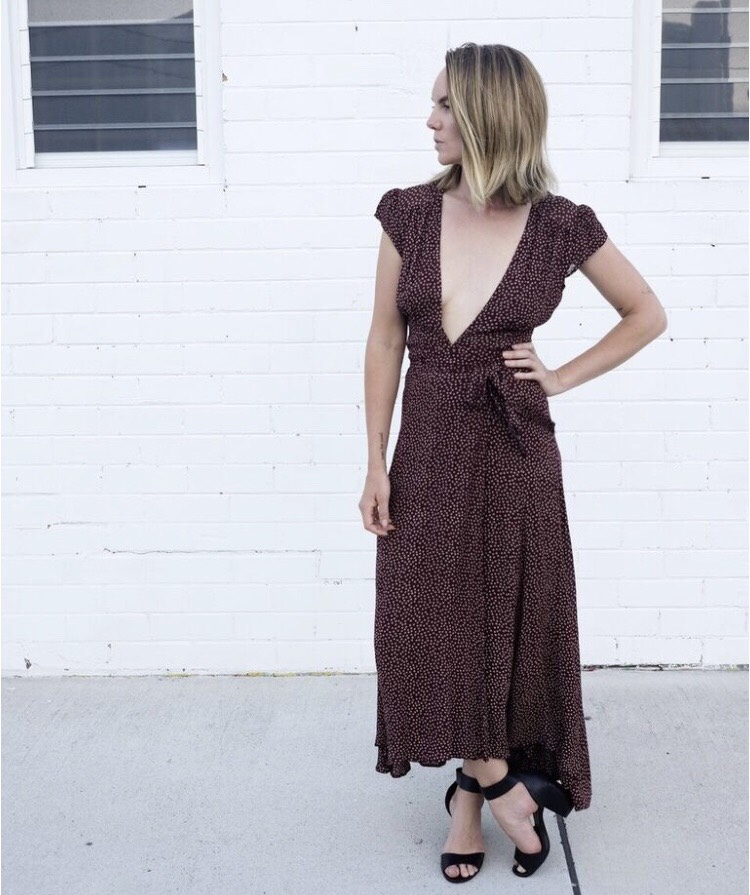I didn’t buy new clothes for a whole year… and it didn’t really affect me. I was just fine.
It all started with a bet.
I REEEEEAAALLY wanted a new dress, you know, that new brand all the girls are wearing. But I couldn't justify spending $250+ on a dress that probably wasn't going to be worn more than a couple of times. Having just taken a step forward in my career but back in my finances, and booking a trip to New York City for a month, I knew I couldn't afford it.
I complained to my boyfriend of my struggles, and suggested that maybe he could buy it for me. It was a firm no, but how firm is a firm no really, I mean, he wants me to be happy, right? I came up with an idea: "What if I don't buy any clothes or shoes until we are on holidays? Then will you buy it for me?"
At this stage I feel it's important to point out that I am a fully functioning adult that can afford her own clothes but also likes to hold onto her spare cash in times of need.
He looked at me, shocked, and said, "I bet you that dress that you can't not buy clothes for the next 12 weeks until we leave. If you win the bet, I will buy you the dress." I knew I'd get him eventually.
As the 12 weeks went by, and Winter turned to Summer, my jeans became too hot, my obsessive seasonal wardrobe clean-out had already happened. I was in big trouble. I had two pairs of shorts, two summer dresses that weren't to dressy for everyday wear and a giant pile of striped t-shirts. But I was determined. I had to win the bet.
I looked at my clothes and my calendar and I decided that it would be just fine. I could manage with this and I also had plenty of warm clothes for our trip. I didn't need anything new.
So, I stopped buying clothes, just like that. And I won the bet! In the end I didn't get the red, star patterned, Instagram famous dress, because the more I didn't buy clothes, the more I became aware of how frivolously we buy and dispose of clothing. Having a keen interest in sustainability, I immediately realised how wasteful I had previously been. I decided instead I would use the prize as my Christmas present and find a dress by a sustainable brand that would outlast the trend.
Fast forward 12 weeks, and there I was, sitting in our AirBnB in the Lower East Side, two days before Christmas, looking at what fun things there were to do in walking distance of our apartment when it flashed up: Reformation, my favourite brand to perve on on Instagram, was on the same street as I was. It was a dream come true!
I suggested that while getting coffee the next day we could go and check it out and I could choose my winners Christmas dress from there. And I did.
And it (plus another one because when in Rome…) was the last piece of brand new clothing I bought for a whole year.

Image: Anne Cottier in her New York Christmas dress
On January 1st, I said "I think my resolution will be not to buy any brand-new clothes for a whole year, only second hand and only if I need it. No 'clothes shopping'."
It seemed so obvious that it was good for my wallet but also good for the environment.
I'll be honest, I was met with some serious doubt and some big laughs, straight to my face, but the further through the year I got, the easier it was to just wear what I had, borrow, or source second hand.
I never had to go to the shops or try on clothes or spend extra money for an already expensive event. Those three things I really despised were no longer a problem for me. And the best part was, the clothes I already owned got so much more wear. My new Christmas dress that might have only been worn once or twice instead got so much air-time that I started loving outfit repeating. The compliments on the dresses were flowing in which boosted my confidence which in turn made the dresses look even better. I just loved wearing them!
I'd be lying if I said there weren't days when I looked at my wardrobe and said, "I actually have nothing to wear" or "Gosh, I neeeed new clothes" but I have never got so much wear or value out of my clothes than I did that year. I started looking at my clothes differently. I pulled clothes out of the closet that I hadn't worn in years and started wearing them again, altering them to suit my current style or repurposing them as cleaning rags or accessories. I also donated them, traded them with my friends or in the case of excellent quality pieces, I sold them. I mean if I never wear it now with limited options, when would I wear it? But could I use the cash, yes indeed!
The year is up and I have already decided that I will carry my resolution over with a few minor changes. I will allow myself to buy pieces of clothing that I can't stop thinking about after 1 month, that are sustainably created and that are made by brands and parent companies who practice transparency. It is important to me to know that no women, men or children were in danger, harmed or ill-treated in the making of my clothes and that the people who do make my clothes are doing so in safe and fair working conditions.
I always try to buy Australian and from small business in other aspects of my life so I will carry this over to my wardrobe and I will only buy materials that don't contain plastic micro-fibres or synthetic dyes. Linen, Silk, Cotton and Hemp are easy to get locally and if I can't buy Australian I will look at the carbon footprint that will come from ordering from overseas.
There are brands that are owned by Australians, living in overseas, charging USD, getting their clothes made in China and posted internationally and I feel like that is a lot of steps from sale to wear that don't really need to happen. Not to mention the packaging.
So, all of these things play a part in how and why I will choose my clothes carefully.
Most labels that claim to be sustainable will have a transparency section below each garment showing the consumer exactly how much impact it has had on the environment, how much water was used in its creation, where the materials used to make it come from and the conditions in which it was made. If the brand is an off-shoot of a parent company, you can usually find the parent company's policies on their website.
If you can't find policies or product information, it's probably a sign that you're not shopping sustainably, and if the person selling you your clothes can't tell you where they came from, that's not a good sign as far as fair-trade is concerned.
I'm not suggesting that winning a bet has led to me become the most sustainable fashionista on the planet, but it has definitely impacted the way I shop, the way I view and value clothing and the way I will buy my clothes in the future.
Anne Cottier is a Marketing and Public Relations Executive with a passion for sustainability and fashion and understands the importance of not having "things". She loves going to the beach and surfing, eating delicious food and spending time with her family, friends and her incredibly cute puppy. She's travelled the world but now calls The Gold Coast home.
Read this next: To Cup Or Not To Cup: Common Questions About Menstrual Cups Answered!
WE ARE WOMEN AND GIRLS FROM EVERY CORNER OF THE PLANET BUILDING A LIFESTYLE REVOLUTION TO FIGHT THE CLIMATE CRISIS, WILL YOU JOIN THE MOVEMENT?

